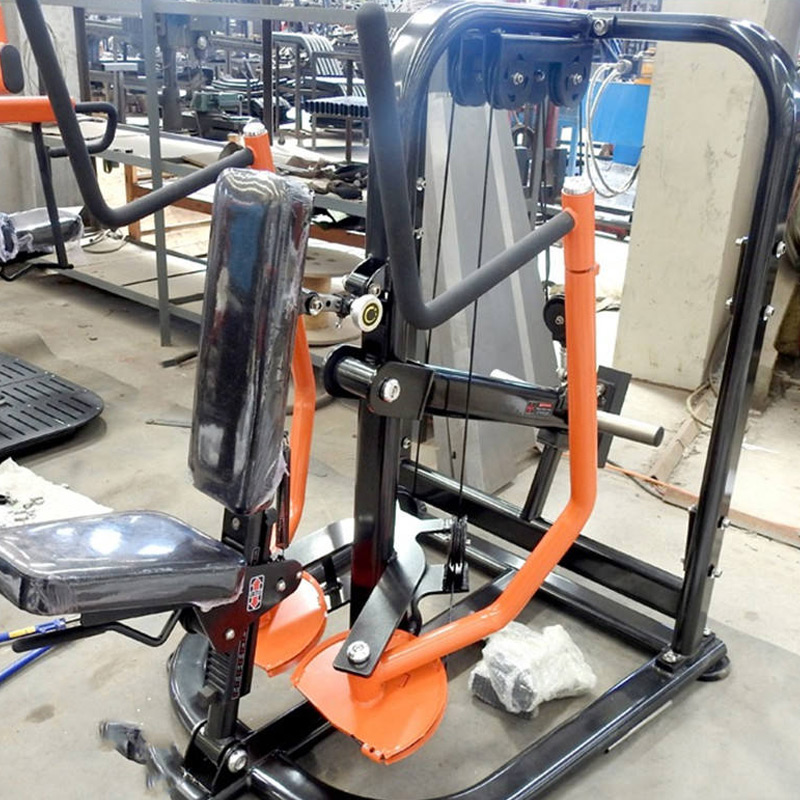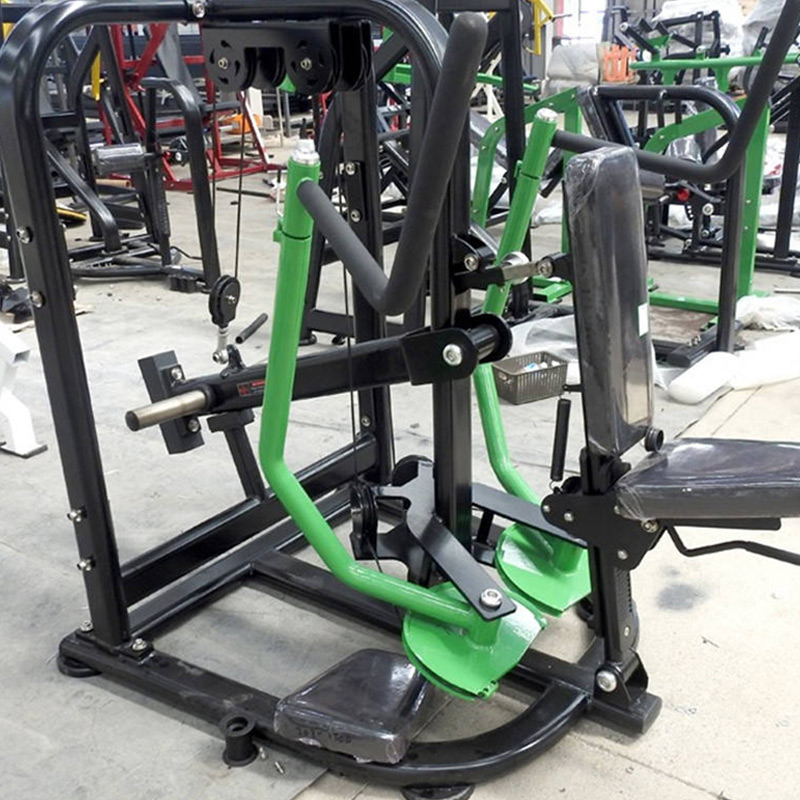A pectoral machine, often referred to as a chest press machine or a pec deck machine, is a piece of strength training equipment designed specifically to target the muscles of the chest (pectoral muscles). It provides a controlled environment for performing chest exercises, making it suitable for both beginners and experienced lifters.
Types of Pectoral Machines:
- Chest Press Machine:
- Horizontal Chest Press: Involves pushing handles forward while seated or lying on a bench, simulating a bench press motion.
- Incline Chest Press: Similar to horizontal chest press but with the bench set at an incline to target the upper chest more intensely.
- Decline Chest Press: Bench set at a decline angle to focus on the lower chest muscles.
- Pec Deck Machine:
- A machine where you sit and push padded levers together in front of your chest, simulating a fly motion, primarily targeting the pectoral muscles.
Equipment and Setup:
- Adjustable Seat and Backrest: Allows users to set up the machine according to their height and comfort.
- Weight Stack or Plates: Provides adjustable resistance to increase or decrease the intensity of the exercise.
- Padded Supports: Offers comfort and stability during the exercise, especially important for heavier lifts.
Muscles Targeted:
- Pectoralis Major: The primary muscle of the chest, responsible for movements like shoulder adduction and internal rotation.
- Anterior Deltoids: Front shoulder muscles that assist in pressing movements.
- Triceps: Secondary muscles involved in pushing motions, especially in chest presses.
Technique (Chest Press Machine):
- Adjustment:
- Set the seat height so that the handles or pads are aligned with your mid-chest when seated.
- Adjust the weight stack or select the appropriate weight plates.
- Execution:
- Sit with your back against the backrest and grasp the handles or pads with an overhand grip.
- Exhale and push the handles or pads forward until your arms are extended but not locked out.
- Keep your elbows slightly bent throughout the movement to maintain tension on the chest muscles.
- Lowering Phase:
- Inhale and slowly bring the handles or pads back towards your chest in a controlled manner, maintaining resistance.
- Stop just before the weight stack touches and immediately begin the next repetition.
- Variations:
- Adjusting the grip width (wide, narrow, neutral) can change the emphasis on different parts of the chest.
- Using different angles (flat, incline, decline) targets different areas of the chest muscles.
Benefits:
- Isolation and Focus: Pectoral machines isolate the chest muscles, allowing for focused development and strength gains.
- Safety and Control: Provides a controlled range of motion, reducing the risk of injury compared to free weight exercises.
- Variety and Versatility: Different machines and adjustments provide options to target specific areas of the chest and accommodate different fitness levels.
Common Mistakes to Avoid:
- Using Excessive Weight: Start with a manageable weight to ensure proper form and avoid strain on joints.
- Neglecting Full Range of Motion: Lower the weight stack or handles fully toward your chest to maximize muscle activation.
- Relying on Momentum: Perform each repetition in a controlled manner, avoiding jerking or using momentum to lift the weight.
Incorporating into Your Workout:
- Warm-Up: Use pectoral machines as part of your warm-up routine to activate the chest muscles before heavier lifts.
- Strength Training: Include chest presses or pec deck exercises in your upper body strength training routine, aiming for 2-4 sets of 8-12 repetitions.
Pectoral machines are valuable tools in developing and strengthening the chest muscles, offering stability, safety, and versatility in targeting different areas of the chest. Incorporate them into your workout regimen to enhance chest muscle development and overall upper body strength. Adjust weights and machine settings as needed to align with your fitness goals and progression.























































Reviews
There are no reviews yet.